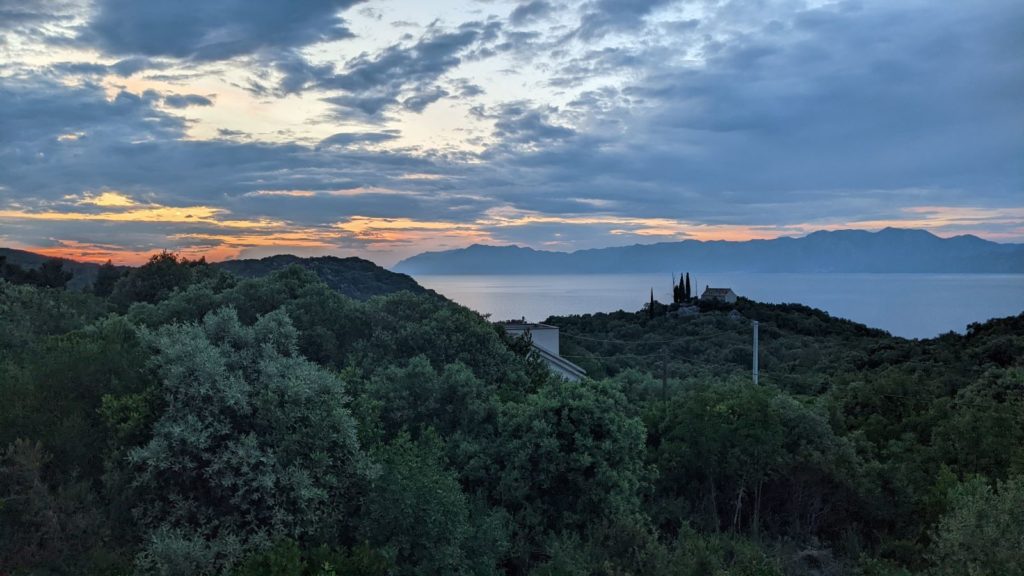This post contains affiliate links.
There are a lot of ways to travel on a budget, some more adventurous than others. The biggest ways I save money while traveling are using credit card reward points, staying with friends, and going to budget friendly travel destinations. It also helps to have some free hobbies, like hiking and watching sunsets.
I’ve found a lot of ways to save money on vacation and put them together in this guide. Are there any other ways you save money when traveling? Let me know in the comments below!
How to save money on hotels

1. Use credit card reward points.
I use the Marriott Bonvoy card for most of my purchases and save up my points for free hotel stays. I usually use my points for 2 or 3 free nights in an expensive city, and then stay at Airbnbs in less expensive cities. You can use other travel credit cards for flights too.
2. Spend more time in budget friendly travel destinations.
The costs of hotels and food varies a lot by city and region. Ireland and Switzerland are some of the most expensive countries in Europe, so I wouldn’t stay there very long unless I’m staying with a friend. Capital cities tend to be more expensive as well, like London, Paris, and Lisbon.
If I really want to visit an expensive city, I’ll usually stay in a hostel. Hostels also tend to be in more central areas of the city.
If I’m traveling for an extended amount of time, I’ll stay longer in less expensive cities. For example, one month at an Airbnb in Mostar was the same price as a hotel for 3 days in Lisbon (around €450). The Balkans are one of the most affordable regions in Europe. I highly recommend Mostar, Trebinje, and Kotor for budget friendly travel destinations in Europe.
3. Book accommodations as early as possible.
The best deals on Airbnb will get booked faster, so you can save money by booking as early as possible. Check cancellation policies before booking. Some places will have an option to cancel, sometimes up to a day before check in.
4. Compare hotels, Airbnbs, and hostels.
I usually compare prices for hotels, Airbnbs, and hostels. When comparing different accommodation options, there are a few things that can affect the total cost.
- Location. It’s usually cheaper to stay outside of the city center, but what are the transportation options? Will you have to pay for a taxi to get there from the airport? Can you take public transportation to the major attractions? It can be worth paying extra for a better location if you’ll save money on transportation costs.
- Kitchen. If you like to cook, it can be worth paying more for an Airbnb with a kitchen so you can save money on food. Some Airbnbs I’ve stayed in had a balcony with a great view, so I actually preferred eating there instead of going out. The picture above was my view from my apartment in Dubrovnik, so I didn’t feel like I was missing anything when I stayed in.
- Other expenses. Hostels can be cheaper for the room, but will you end up spending more on alcohol, food, and activities? When I stayed in a party hostel in Madrid, I spent more on drinks and cover charges than the amount I saved on the room costs. If I had stayed in a hotel, I probably wouldn’t have gone out as much (or had as much fun).
- Reviews. Read the reviews carefully. If you have to cancel because of a problem with the room, it will be more expensive (and stressful) to move somewhere else at the last minute.
5. Stay with friends.
I’m fortunate to have some friends who let me stay with them. Some of my favorite trips were when I was visiting friends. After solo traveling for a while, it can be nice to be with someone you know. They might also be able to show you around or give you some local tips. (Pro-tip, only make friends with people who live in cool places.)
Be sure to be a polite guest. I usually bring a small gift from my previous destination, like local chocolate. I also only stay with people who I would be happy to return the favor for if they want to visit me later.
6. Alternative accommodation options.
There are a few alternative options that can help you save money on hotels. I haven’t tried these myself, but other travelers I met recommended them.
- Work Away: Businesses will let you stay with them for free in exchange for free labor. Sometimes food is provided as well. There are a wide variety of work assignments to choose from. I met some backpackers who worked for a hostel one week and a farm the next week.
- Trusted Housesitters USA: You can get paid to stay somewhere for free by watching people’s pets while they’re away. There are several sites you can use to find housesitting jobs. Trusted Housesitters USA was recommended to me, however they do require a membership fee to sign up.
- Couchsurfing: There’s a Couchsurfing app where you can stay on people’s couches for free. I personally don’t feel comfortable with this, but some other travelers swear by it. If you’re extroverted and like meeting new people this could work for you.
How to save money on flights
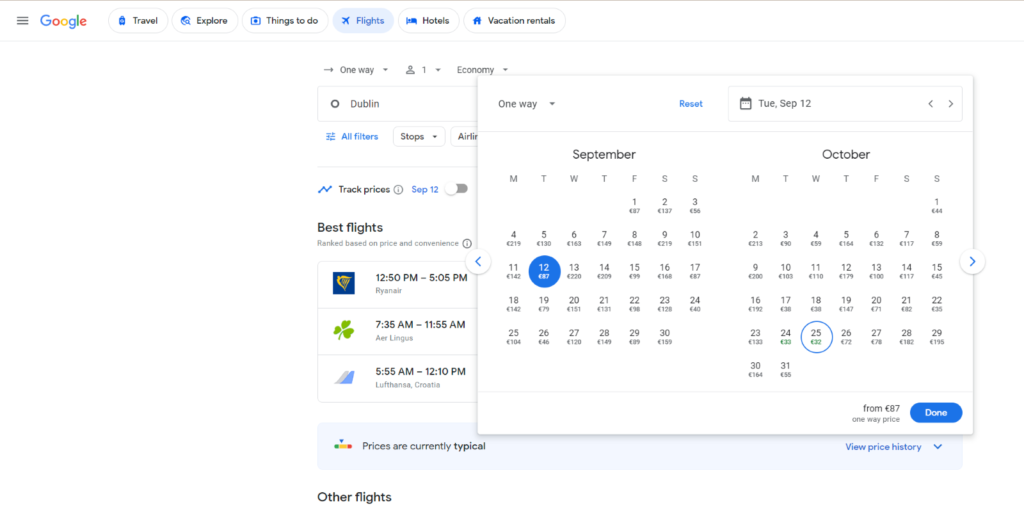
7. Use Google Flights to find the best flight deals.
It will always be less expensive to travel if your dates are flexible. Use the calendar in Google Flights to check the cheapest flight dates. For example, in the screenshot above, flight prices are over €200 on some dates, but only €32 on October 25.
The least expensive tickets are often the most inconvenient, so use the filters to remove things you don’t want to deal with, like multiple layovers, early flights, or late arrivals.
Don’t forget to check nearby airports too. If your destinations are flexible, sometimes it’s cheaper to fly to a different city or country and then take the train to your final destination. For example, when I visit my friend in Belgium, it’s usually cheaper to fly to Amsterdam than Brussels. When I do this I might stop in The Hague on the way because it’s one of my favorite cities.
For overseas flights, sometimes a round trip ticket is cheaper than a one way ticket. So check both.
8. Check your airline’s luggage policy.
It’s usually cheaper not to check a bag. There are some extra benefits to this too. You won’t have to wait in line to check your bag or wait at baggage claim when you arrive. And it can also help save money on souvenirs if you don’t have room to pack them.
However sometimes on budget airlines, it can actually be cheaper to check a bag than to bring a large carry-on. So check your airline’s bag policy. One time when I flew with Ryanair, I did not pay extra for a large carry-on and was only allowed a personal item (a bag that fits under the seat). I brought my backpack that fits under the seat, but they said it was too large anyway and charged me at the gate.
On another trip I flew with Aer Lingus, and a 10kg bag was free to check-in but €10 to carry-on.
How to save money on transportation
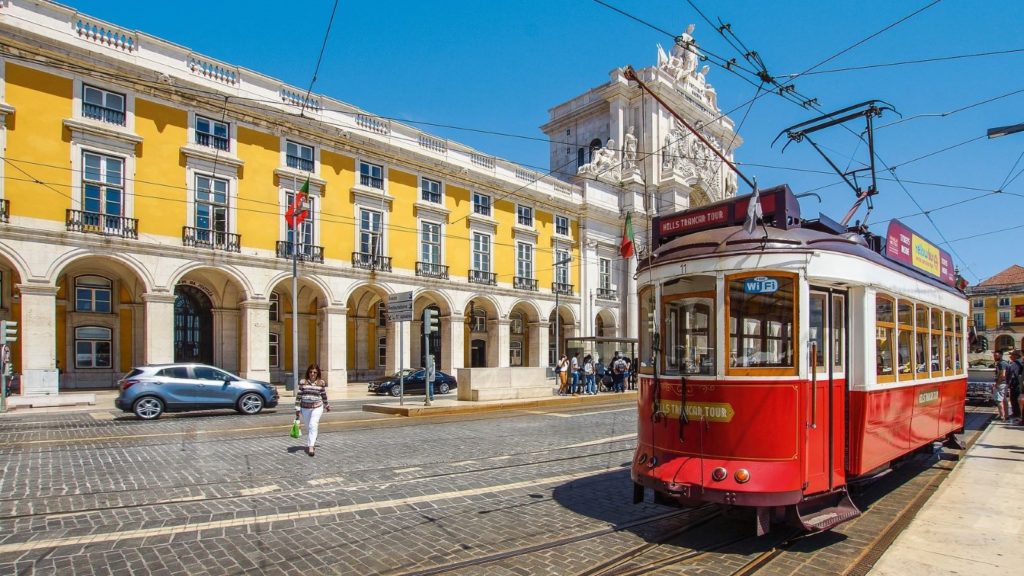
9. Compare bus and train prices.
Buses are usually cheaper and slower than trains, but not always. Sometimes there could be a direct bus ticket but no direct trains available. Prices can also fluctuate based on demand. When I traveled from Porto to Lisbon, Flixbus was much cheaper than the train. But when I went from Lisbon to Lagos, the train was cheaper.
Make sure to check the station location too. Sometimes the bus and train stations are in different places. Consider the cost of getting to the station when comparing ticket prices.
10. Walk or take public transit instead of a taxi.
I love walking to get around town because it’s a nice way to see more of the city. It’s also free.
When it’s too far or rainy to walk, public transit will be a lot cheaper than a taxi. Usually trams/metros are easier to navigate than buses. In most large European cities, metro stations have signs in English to help you find the right train.
In some cities you can buy your ticket on the bus/train, and in other cities you need to buy it ahead of time. So research where you’re going to double check.
11. Combine transportation with a guided tour.
If you’re taking a guided tour to an attraction located between two major cities, you might be able to be picked up in one city and dropped off in the other.
For example, Croatia’s Plitvice Lakes National Park is located between Zagreb and Split. There are tours available from both cities. Some tour companies will allow you to be picked up in Zagreb and dropped off in Split, or vice versa. Not every company will do this, but it’s worth asking.
How to save money on food while traveling

12. Eat street food.
I prefer street food instead of restaurants because it’s more casual and usually less expensive. Markets are a great way to try small amounts of several different foods. At Mercado do Bolhão in Porto, I tried a lot of different Portuguese foods for around €2 each.
13. Cook your own meals.
It’s usually cheaper to buy food in grocery stores and cook your own meals. You can still try local foods this way. For me it’s fun to shop in international grocery stores and see what different foods they have, especially desserts.
14. Have a picnic.
My favorite budget travel meal is to buy local bread, cheese, olives, and wine and have a picnic at a park. In Portugal you can even find single-serving wine juice boxes for under €1.
15. Get recommendations from locals.
Sometimes restaurants in well-known areas have higher prices because of all of the tourists. Locals will know off-the-beaten-path spots with better prices.
How to save money on things to do while traveling
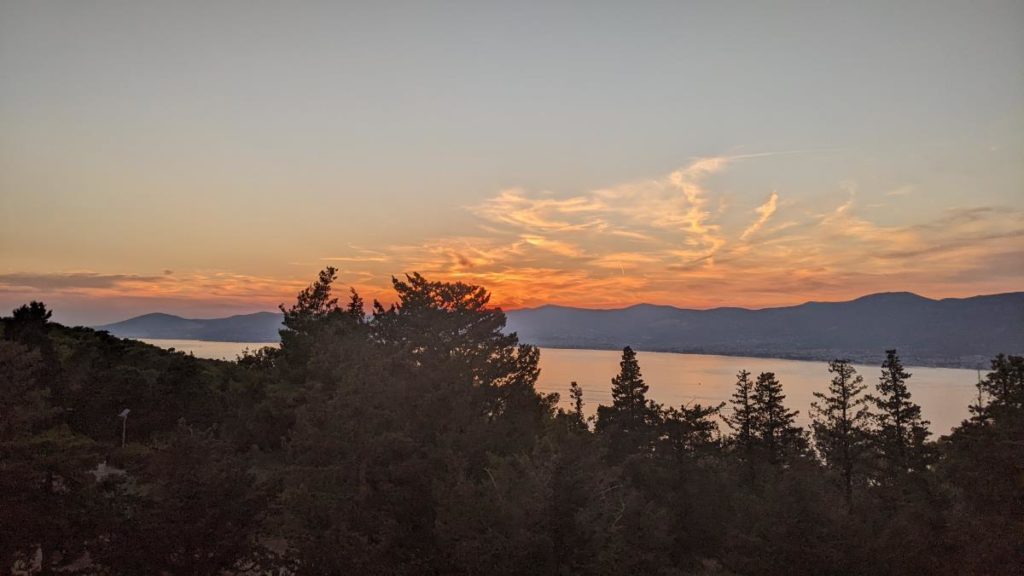
16. Find free things to do.
If I’m going somewhere with a beach, I will probably spend most of my time there. It’s free and I don’t feel like I’m missing out on anything.
I love to look for viewpoints to watch the sunset and try to find the best one. I also like to hike, walk through parks, or just walk around exploring the city.
17. Check if museums have free days.
Some museums have free or discounted tickets on certain days of the week. The Prado in Madrid has free entry during the last 2 hours every evening. Google “free museums [city]” to find out if there are any free museums in the city you’re visiting.
18. Look for street art.
Looking for street art is a fun and free way to see art while exploring the city. I use streetartcities.com to find murals and then walk to the ones I want to see. Street art is popular in a lot of European cities. The street art in Mostar is some of the best, in my opinion.
19. Go on a free walking tour.
Most major cities have free walking tours. This is a great way to see the main attractions and learn more about the city. Keep in mind that a free walking tour means it’s free to sign up, but you should tip the tour guide. I usually tip €10.
20. Compare tour prices.
There might be a million boat tours or excursions in the city you’re visiting. Compare prices on multiple websites (Tripadvisor, Getyourguide, etc…) as well as booths where people sell tours in person. There are usually a bunch of these booths in touristy areas along the coast. I typically pick one tour that costs €30-50 and do free activities the rest of the time.
21. Get a City Pass.
Some larger cities have a city pass you can purchase for free or discounted entry to local attractions. Some passes also include public transportation.
These are worth buying if you will actually use them. It’s a good way to save money if there are some major attractions you really want to see.
Other ways to travel on a budget
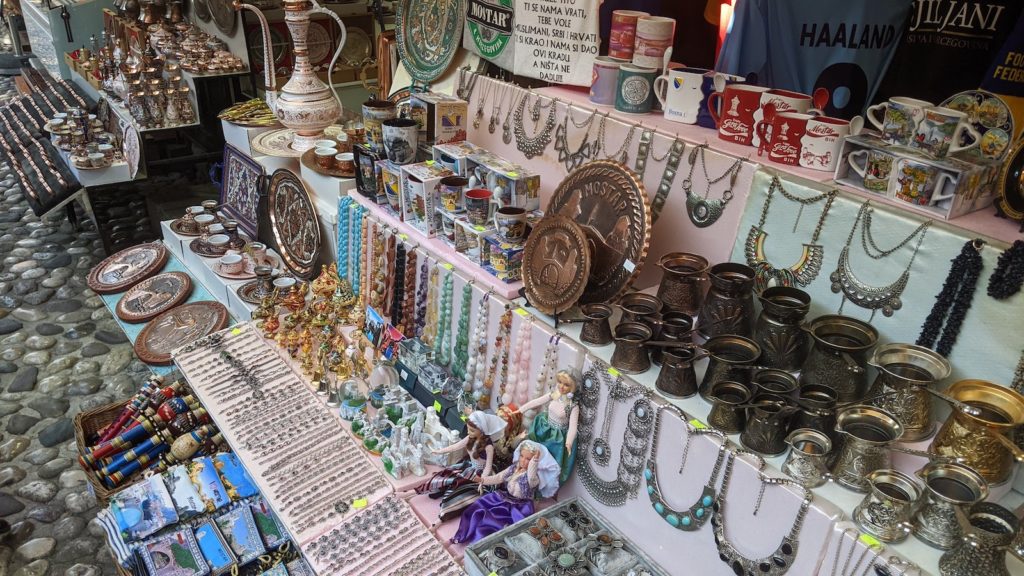
22. Don’t buy a lot of souvenirs.
I like to travel light, which means no room for souvenirs. It’s much easier to say no to things I’m tempted to buy when I know I don’t have room for them.
If you’re traveling long term, I don’t recommend buying magnets in each city. I did this before thinking magnets would be good souvenirs because they’re small. Once you have 15+ magnets they start to get very heavy. There are also restrictions on mailing magnets internationally. I tried to mail some things back home and multiple countries would not let me ship magnets.
23. Save money on travel insurance.
There are a lot of options for travel and health insurance when you’re traveling. I use SafetyWing because you pay for a monthly subscription and can cancel anytime. It includes health insurance coverage and travel insurance for things like lost luggage.
When I compared different international health insurance options, SafetyWing was the least expensive plan for me. You can use this widget to see how much it will cost you.
24. Save money on international data.
It might be cheaper to get a local sim card instead of using your phone plan’s international data. The easiest option is Airalo eSIM cards. If you’re staying in one country for more than a week, you can save even more money by buying a physical sim card locally. But usually I prefer Airalo because I like to have data before I arrive. If you’re going to several countries, get a regional eSIM to make things even easier. I used the Europe eSIM and it covered every country I visited except Bosnia and Herzegovina.
25. Let go of FOMO.
Some bigger cities have so many things to do that you won’t have time to do everything. Pick the things you care about the most and don’t worry about the remember you can always come back.

